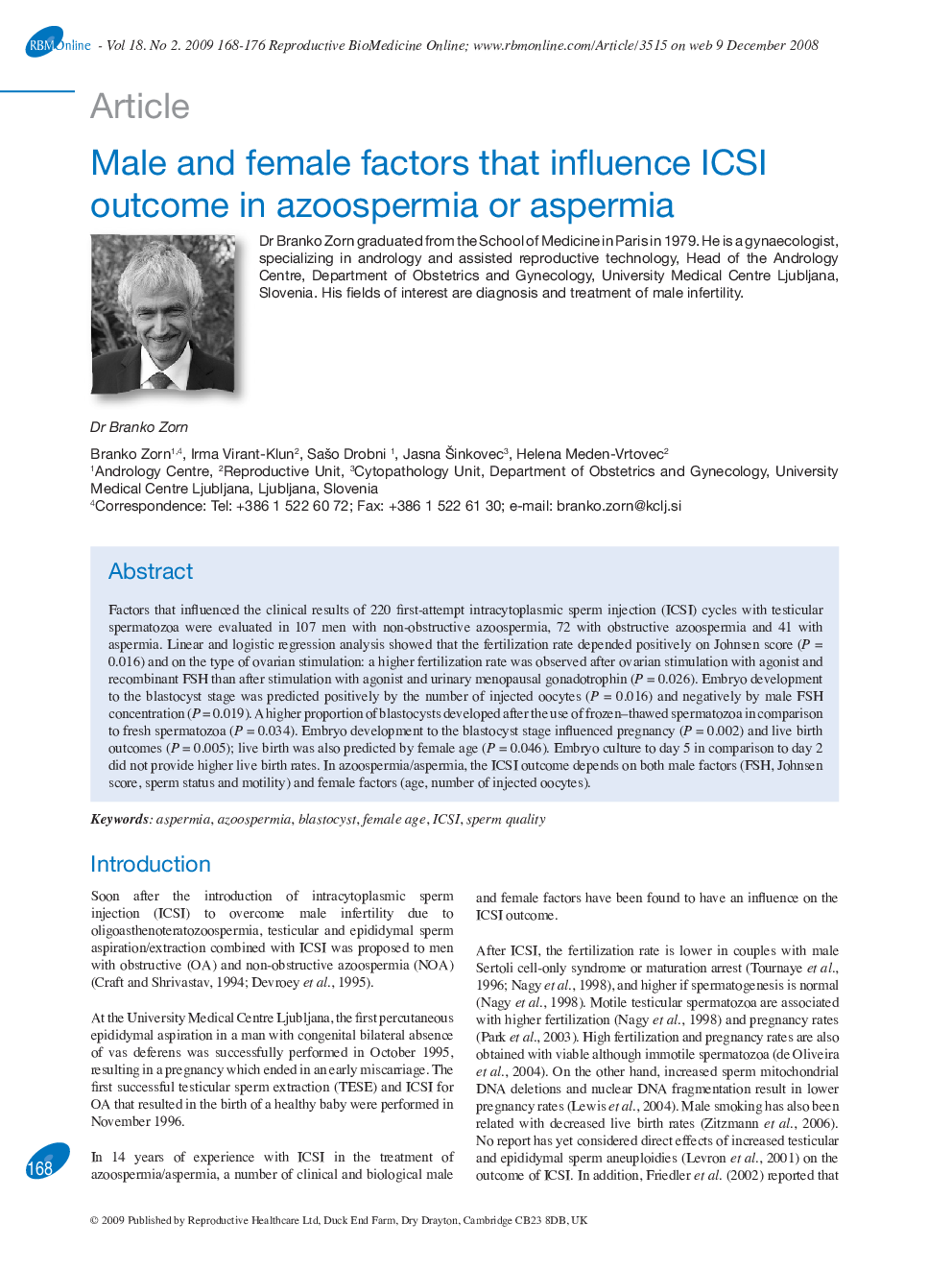| Article ID | Journal | Published Year | Pages | File Type |
|---|---|---|---|---|
| 3972195 | Reproductive BioMedicine Online | 2009 | 9 Pages |
Factors that influenced the clinical results of 220 first-attempt intracytoplasmic sperm injection (ICSI) cycles with testicular spermatozoa were evaluated in 107 men with non-obstructive azoospermia, 72 with obstructive azoospermia and 41 with aspermia. Linear and logistic regression analysis showed that the fertilization rate depended positively on Johnsen score (P = 0.016) and on the type of ovarian stimulation: a higher fertilization rate was observed after ovarian stimulation with agonist and recombinant FSH than after stimulation with agonist and urinary menopausal gonadotrophin (P = 0.026). Embryo development to the blastocyst stage was predicted positively by the number of injected oocytes (P = 0.016) and negatively by male FSH concentration (P = 0.019). A higher proportion of blastocysts developed after the use of frozen–thawed spermatozoa in comparison to fresh spermatozoa (P = 0.034). Embryo development to the blastocyst stage influenced pregnancy (P = 0.002) and live birth outcomes (P = 0.005); live birth was also predicted by female age (P = 0.046). Embryo culture to day 5 in comparison to day 2 did not provide higher live birth rates. In azoospermia/aspermia, the ICSI outcome depends on both male factors (FSH, Johnsen score, sperm status and motility) and female factors (age, number of injected oocytes).
